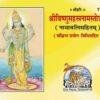Yamuna Chhath is a significant Hindu festival celebrated in reverence to Goddess Yamuna. This festival is celebrated on the sixth day of Chaitra month, which falls in March or April, depending on the Hindu calendar. During this festival, devotees offer prayers and perform various rituals to seek the blessings of Goddess Yamuna.
The festival holds great importance for Hindus, as the Yamuna river is considered one of India’s holiest rivers. The river is believed to embody the goddess, and her blessings are sought to purify the soul and attain salvation. The festival is celebrated with great fervor and devotion across different parts of the country, especially in North India.
In this article, we will delve deeper into the history and significance of Yamuna Chhath and the auspicious mahurat and puja vidhi that are followed during this festival. By the end of this article, you will better understand the importance of Yamuna Chhath, and the rituals followed to appease the goddess.
Origin of Yamuna Chhath
The origin of Yamuna Chhath can be traced back to ancient Hindu texts and scriptures. According to popular belief, the festival was first celebrated by King Kunti Satyavadi, who ruled over the region of Uttarakhand. He is said to have observed a fast and performed rituals on the banks of the Yamuna river to seek the blessings of the goddess. It is believed that his devotion and penance pleased Goddess Yamuna, and she appeared before him to grant him his wishes.

The historical significance of Yamuna Chhath
Yamuna Chhath holds great historical significance in Hinduism. It is believed that the festival was celebrated by the kings and queens of ancient India, who sought the blessings of the goddess for prosperity, health, and wealth. The Yamuna River is considered one of India’s most sacred rivers and is believed to have the power to purify the soul of sins and grant salvation.
The festival also has a significant connection with Lord Krishna, who is said to have spent his childhood on the banks of the Yamuna river in Vrindavan. It is believed that Lord Krishna used to play and perform various activities on the banks of the river with his friends and devotees. The festival of Yamuna Chhath is also considered to celebrate Lord Krishna’s connection with the river and his love for the goddess.
Dates of Yamuna Chhath
The auspicious festival of Yamuna Chhath is observed on the sixth day of the Hindu month of Chaitra, which falls in March or April. Yamuna Chhath is on Sunday, April 14, 2024, this year.
Date, Time and Muhurat of Yamuna Chhath
Shashthi Tithi Begins- April 13 | 2:34 AM in (United States)
Shashthi Tithi End– April 14 | 2:13 AM in (United States)
Preparation for Yamuna Chhath puja
Preparing for Yamuna Chhath puja involves both physical and mental preparation. Here are some steps to follow for the preparation of the puja:
- Clean the puja area: Clean it thoroughly and decorate it with flowers, rangoli, and other decorations.
- Take a bath: Take a bath and wear clean clothes before performing the puja. This helps in purifying the body and mind.
- Arrange the puja samagri: Arrange all the puja samagri (ingredients and items required for the puja), such as a diya (lamp), ghee (clarified butter), incense sticks, flowers, fruits, and sweets.
- Prepare the offerings: Prepare the offerings such as wheat, jaggery, and gram dal to the river Yamuna.
- Mentally prepare for the puja: Sit in a quiet place and meditate for a few minutes to calm the mind and focus on the puja.
- Seek blessings: Seek the blessings of the family deity, ancestors, and other gods before starting the puja.
Rituals of Yamuna Chhath puja
The rituals of Yamuna Chhath puja involve performing various steps and offering prayers to seek the blessings of the goddess Yamuna. Here are some of the main rituals that are performed during the puja:
- Lighting the diya: The puja usually begins in the evening, after sunset. Devotees light a diya (lamp) and offer it to the goddess Yamuna.
- Offering flowers, fruits, and sweets: Devotees offer flowers, fruits, and sweets to the goddess Yamuna as a symbol of their devotion and respect.
- Performing the arati: After the offerings, devotees perform the arati (prayer) for the goddess and recite the Yamuna Chhath mantra. The mantra for Yamuna Chhath is “Om Namah Shivaya Yamunaayai Namah”. Devotees can chant this mantra while performing the puja to seek the blessings of the goddess.
- Offering wheat, jaggery, and gram dal to Yamuna: During the puja, devotees offer wheat, jaggery, and gram dal to the river Yamuna. This is done to seek the blessings of the goddess and show gratitude for the river’s benefits.
- Performing aarti with a diya filled with ghee: Devotees perform aarti with a diya filled with ghee (clarified butter) by circling it around their head and then offering it to the river.
- Fasting: Some devotees also observe a fast on this day as a mark of devotion and to seek blessings from the goddess.
These rituals are performed with great devotion and sincerity to seek the blessings of the goddess Yamuna. The puja is considered an important way to purify the soul and seek the blessings of the goddess for prosperity and well-being.
Conclusion:
In conclusion, Yamuna Chhath is an important festival celebrated in India to honor the goddess Yamuna, who is considered to be a sacred river. The festival is significant in Hindu mythology and is celebrated with great devotion and enthusiasm. Devotees perform various rituals during the puja to seek the blessings of the goddess, and the chanting of the Yamuna Chhath mantra is considered a significant part of the puja. The festival is an important reminder of the importance of preserving our rivers and maintaining the ecological balance for the well-being of humanity. Celebrating Yamuna Chhath also helps to promote a sense of community and togetherness among the people who come together to celebrate the festival.



















Add comment